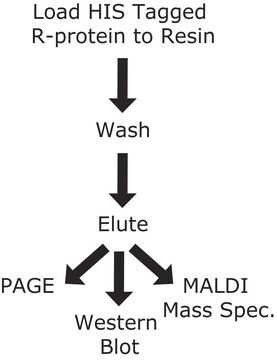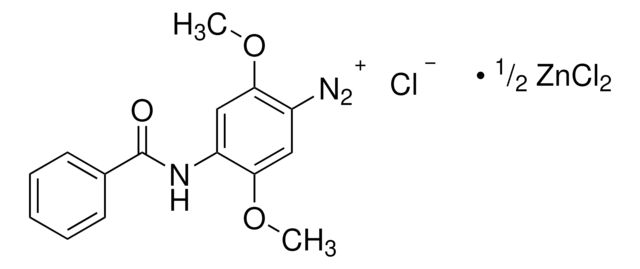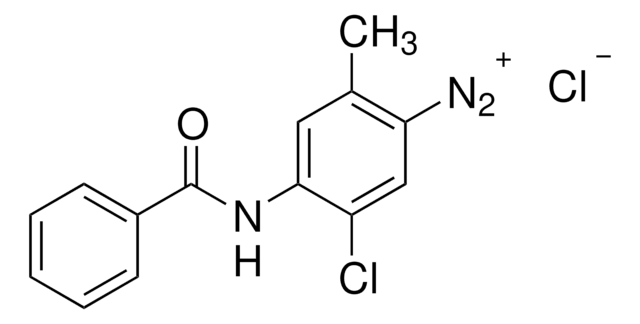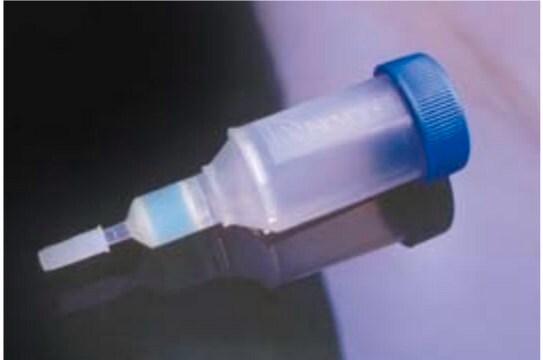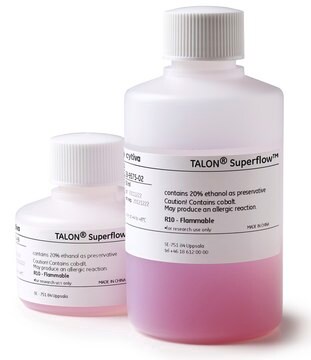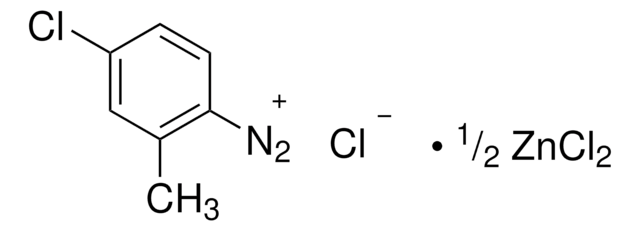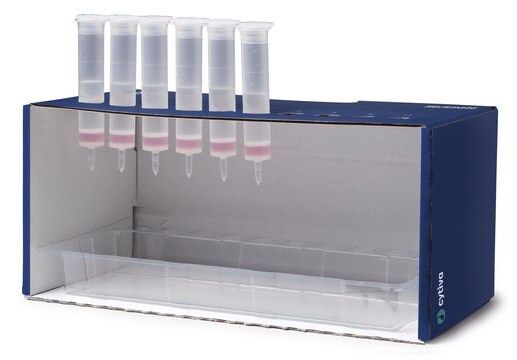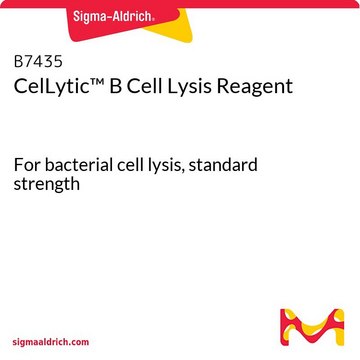H8162
HIS-Select® Cobalt Affinity Gel
(1:1 suspension in a 30% ethanol solution)
Synonym(s):
cobalt affinity gel, cobalt charged agarose
About This Item
Recommended Products
form
(1:1 suspension in a 30% ethanol solution)
shelf life
1 yr (when stored properly.)
technique(s)
protein purification: suitable
matrix
6% Beaded Agarose
capacity
>15 mg/mL, agarose binding capacity (protein)(with an approx. 30 kDa protein)
storage temp.
2-8°C
General description
HIS-Select Cobalt Affinity Gel is an immobilized metal-ion affinity chromatography (IMAC) product. The matrix for this affinity gel is 6% beaded agarose. The selectivity can be modulated with the inclusion of imidazole during chromatography. HIS-Select Cobalt Affinity Gel is durable and can capture recombinant proteins with histidine tags at a high flow rate. Recombinant proteins with His tags are bound using native, denaturing, or mild reducing conditions. The capacity of this affinity gel is typically >15 mg/mL of packed gel, determined with a His-tagged protein of molecular mass ~30 kDa.
Application
Physical form
Legal Information
Signal Word
Danger
Hazard Statements
Precautionary Statements
Hazard Classifications
Aquatic Acute 1 - Aquatic Chronic 1 - Carc. 1B - Eye Irrit. 2 - Flam. Liq. 3 - Muta. 2 - Repr. 1B - Resp. Sens. 1 - Skin Sens. 1
WGK
WGK 3
Personal Protective Equipment
Choose from one of the most recent versions:
Already Own This Product?
Find documentation for the products that you have recently purchased in the Document Library.
Customers Also Viewed
Related Content
Pull-down assays, reagents, and protocols for investigating in vitro protein-protein interactions using affinity or GST pull-down, tandem affinity purification (TAP), and co-immunoprecipitation methods.
Our team of scientists has experience in all areas of research including Life Science, Material Science, Chemical Synthesis, Chromatography, Analytical and many others.
Contact Technical Service
